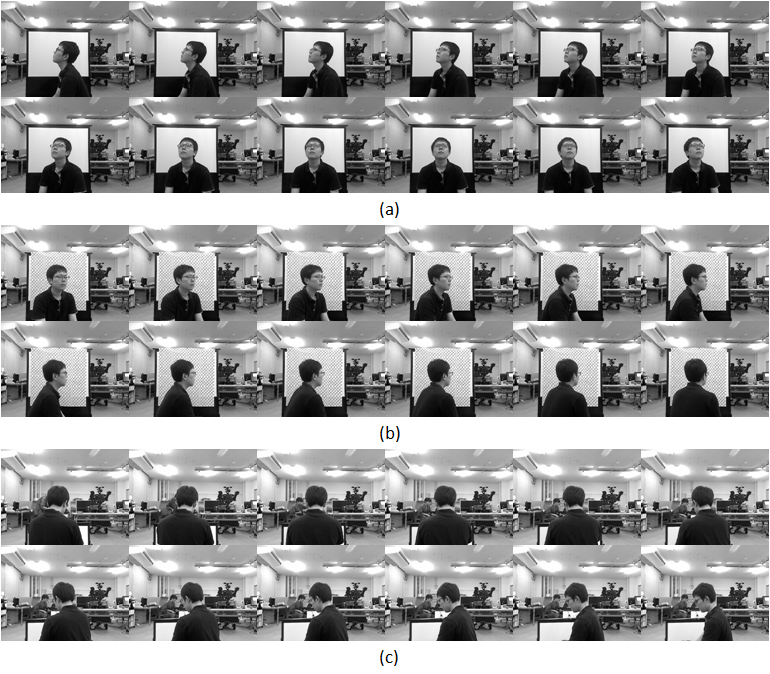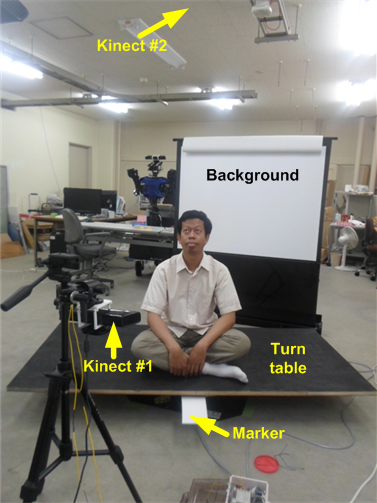The AISL head orientation dataset is a collection of a small scale head or face images dataset that concerns on the orientation of the human head or face with various backgrounds of an indoor scene. This dataset contains 6,480 images of 20 subjects under 36 pan angles, three tilt angles and three different backgrounds.
DescriptionThe main reason behind the development of this dataset is that the performance of head pose or head orientation estimation methods usually achieve a better estimation rate in aligned-images with a small noise from background, whereas in real applications, it is very difficult to have a such of ideal condition. This problem triggers us to provide this dataset in order to present a new challenge by sufficiently simulating the impact of background change and to help the development of the state-of-the-art techniques for estimating head orientation in real applications.
We used a unique approach to collect the images by asking each subject to sit down on the top of a rotating table. Each image is captured for every 10° of rotation using a Kinect camera. The background was changed three times to disturb the detected head region by using three different patterns: a plain white, lines and real scene of our lab to represent a natural background.


Each image is encoded using a specific filename to show the groundtruth information of that image. It consists of five fields of 17 characters long in total. Each field is started by a capital letter as the abbreviation of its representation. We manage our image collection by following a naming convention as follows: AislBxSxxPxxxTxxx.bmp. All images are stored in a bitmap picture (.bmp) format. More detail, the representation of each field can be described as follows.
- Laboratory’s name. “Aisl” refers to our laboratory name.
- Background type. The initial character “B” represents the background type. x=1 for white background, x=2 for line pattern background, and x=3 for natural background.
- Subject’s numbering. The initial character “S” represents the subject numbering. xx=01, 02, 03, ..., 20.
- Pan angle. The initial character “P” represents the pan angle. xxx=000º, 010º, 020º, 030º, ..., 350º
- Tilt angle. The initial character “T” represents the tilt angle. xxx= -45º, 000º, and +45º
The AISL head orientation dataset is now made available for research purpose only.
The researcher(s) is free to use the AISL head orientation dataset by obeying and agreeing the following restrictions on the AISL head orientation dataset:
- The dataset will not be further distributed, published, copied, or further disseminated in any way whether for profit or not.
- All the images will be used for the purpose of scientific researches only. The AISL head orientation dataset, in whole or in part, will not be used for any commercial purpose in any form.
- All technical papers, documents and reports which use the AISL head orientation dataset will acknowledge the use of the dataset by a citation to
Related technical paper(s):
- Bima Sena Bayu Dewantara and Jun Miura, Estimating Head Orientation Using a Combination of Multiple Cues, IEICE Transaction on Information and Systems, vol.E99-D, no.6, pp.1603-1614, 2016.
Please fill in all fields and check the box below to continue download the dataset.